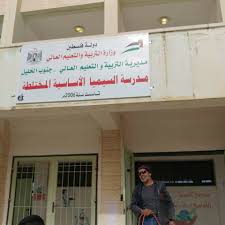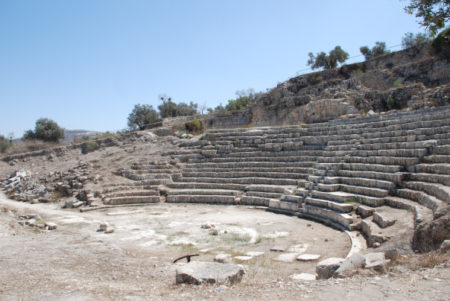(Photo courtesy of Ministry of Tourism and Antiquities)
Israeli occupation authorities, Tuesday, notified a Palestinian school in the town of Samou, to the south of Hebron, to stop working, claiming that it has been constructed in an area which threatens archaeological sites.
Palestinian Ministry of Education said, in a statement, that Israeli occupation authorities notified for the cessation of work in the Simaya elementary school, affiliated with the Directorate of Education, to the south of Hebron, located in Al-Samou area.
The Ministry noted that the Israeli step is a part of a campaign against the school and dozens of other schools, under fake pretexts.
The step threatens Palestinian students’ right to education, a right which is guaranteed by all international laws, charters and customs.
Al Ray further reports that the move coincided with the International Day for Human Rights, revealing Israel’s oppressive agenda and its continued violation of the rights of the Palestinian people, especially the right of students to education.
The school serves more than 40 students in the targeted areas that are subject to Israeli aggression.

In related news, Palestinian students on a field trip, today, at the Sebastia archaeological site, in the north of the West Bank, were harassed by Israeli soldiers, who detained them at the site, according to Sebastia’s mayor, Mohammad Azem.
Azem told WAFA that soldiers broke into the site, to the north of Nablus city, while the students were on a field trip, and detained the students inside it.
He said that soldiers harassed the students and provoked confrontations in the area.
Israel has been trying to take over the site, as it encourages settlers to visit it while preventing Palestinians from caring for it, even though it is located in the heart of the occupied West Bank.
The present town of Sebastia, including the archaeological remains, the historical town, and the cultural landscape, is one of Palestine’s major tourist attractions. A series of restorative activities was carried out in the historic core, including renovation of the mosque, the shrine of Nabi Yahyia, the Cathedral of John the Baptist, the Roman mausoleum, the olive press, Kayed Palace, and the traditional buildings, along with a walking trail.

